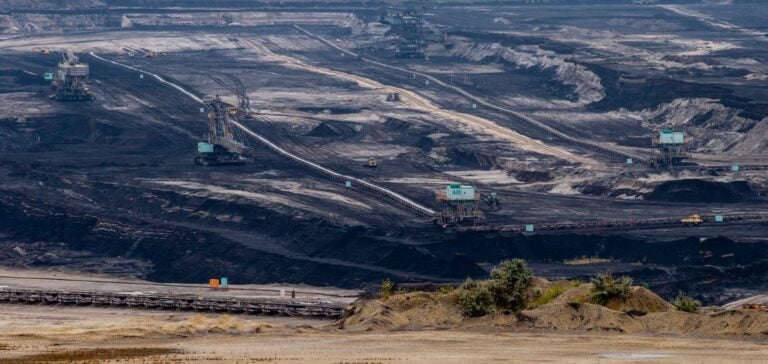With the decline in large discounts, Russian coal appears to have lost its appeal since the second quarter, with many buyers finding alternative fuel sources and some returning to the sellers from whom they imported seaborne coal before the conflict between Ukraine and Russia disrupted trade flows, according to an analysis by S&P Global Commodity Insights.
Russian coal between initial increase and signs of decline in 2023
Russian coal exports rose by 11.91% on the year to 192.6 million tonnes in 2022 after the implementation of European sanctions, as relatively low Russian coal prices attracted buyers, mainly in Asia, according to data from S&P Global Commodities at Sea. Among non-European coal buyers, only Japan reduced its imports, thus withdrawing from the list of the top five buyers of Russian coal, which now includes China, India, South Korea, Turkey and Taiwan.
However, overall Russian coal exports have slowed, growing at a slower rate of 7.40% over the year to reach 100.1 million tonnes in the first half of 2023. In the May-July period, exports fell by 8.67% year-on-year to 49.5 million tonnes, according to CAS data. Many market players said these were the first signs of weakening Russian exports, which would continue through the second half of 2023, keeping annual coal sales volumes below 2022 levels.
Contrasting dynamics of Russian coal imports: Major fluctuations in Asia
Between May and July, Indian imports of Russian coal fell to 5.6 million tonnes, compared with 6.1 million tonnes in the same period the previous year, and South Korean imports dropped to 6.2 million tonnes, down 16.22% on the corresponding period in 2022. Meanwhile, Chinese imports of Russian coal rose by 3 million tonnes over the year to 22.2 million tonnes between May and July, as the country increased its overall coal imports in anticipation of a boom in economic activity following the lifting of COVID-19 restrictions.
Turkey increased its imports of Russian coal to 6.2 million tonnes between May and July, compared with 5.6 million tonnes over the same period in 2022, while Taiwan’s imports amounted to 2.3 million tonnes, a slight increase on the previous year’s 2.2 million tonnes.
Price trends and competition: Russian and Australian coal on world markets
The slowdown in Russian coal exports has coincided with rising prices and the availability of more affordable alternatives, as sellers from other origins – notably Australia – have lowered their prices to regain market share in Asian countries, with Europe having stopped buying coal since the start of 2023. The average price of Russian coal 6,000 kcal/kg NAR fell from $210.33/mt FOB Pacific in the first half of 2022 to $101.36/mt in the first half of 2023, according to Platts data from S&P Global Commodity Insights.
However, over the May-July period, it averaged $104.81/mt, indicating a gradual rise in prices. Meanwhile, the average price of Australian coal low-ash 5,500 kcal/kg NAR FOB Newcastle fell by 37.38% over the year to $117.66/mt in the first six months of 2023, but remained more expensive than Russian coal despite a lower calorific value. Over the May-July period, the average price of this Australian quality fell further to $97.75/mt, resulting in lower demand for Russian coal, which lost its price advantage.
While Russian coal exports are moving away from the peaks reached in the last quarter of 2022 and the first quarter of 2023, Australian supply has increased over the same period. In addition to lower prices, the resumption of coal trade with China following the lifting of the unofficial ban earlier this year has also played a role in the recent surge in Australian coal exports. Australian coal exports totalled 97 million tonnes between May and July, compared with 86.9 million tonnes over the same period in 2022.
Uncertain outlook for Russian coal in the face of challenges and new trends on world markets
Russian coal exports are expected to continue to decline as buyers turn to cheaper alternatives as overall market demand has been weak, according to market sources. China may continue to capture much of the supply from Russia due to the friendlier ties between the two countries and lower freight costs, but countries like India may prefer other options due to strong domestic coal production.
Having already seen the doors of Europe closed to them following the conflict with Ukraine, Russian producers, who have now lost their price advantage, may once again have to look for new buyers willing to purchase new supplies from the country.






















